Stargard 2024-11-06
Stargard Railway Station.
Geographic coordinates: 53.341N 15.031E. Elevation 33 m (108.27 ft). Address: DWORCOWA 2, 73-110 STARGARD.
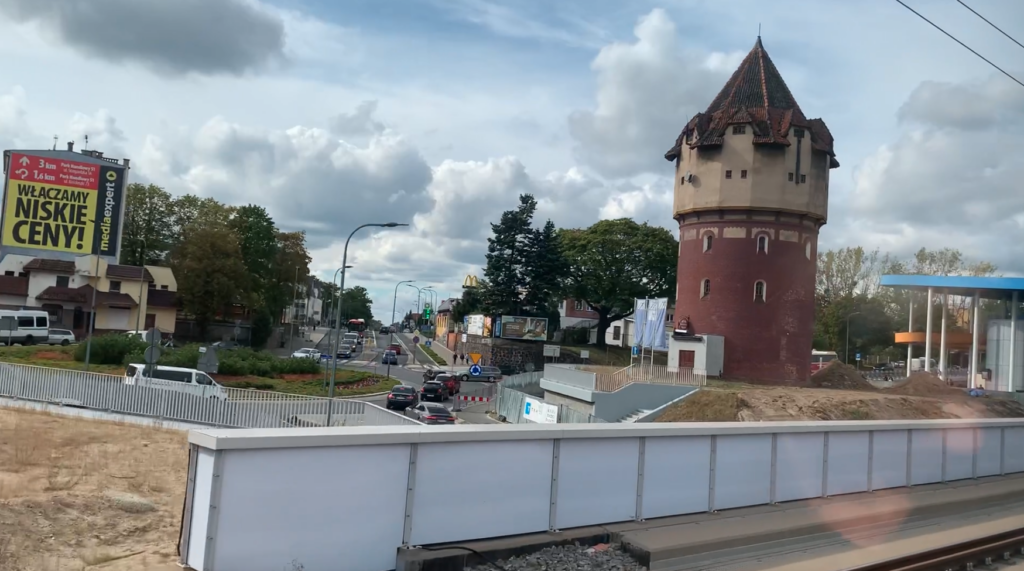
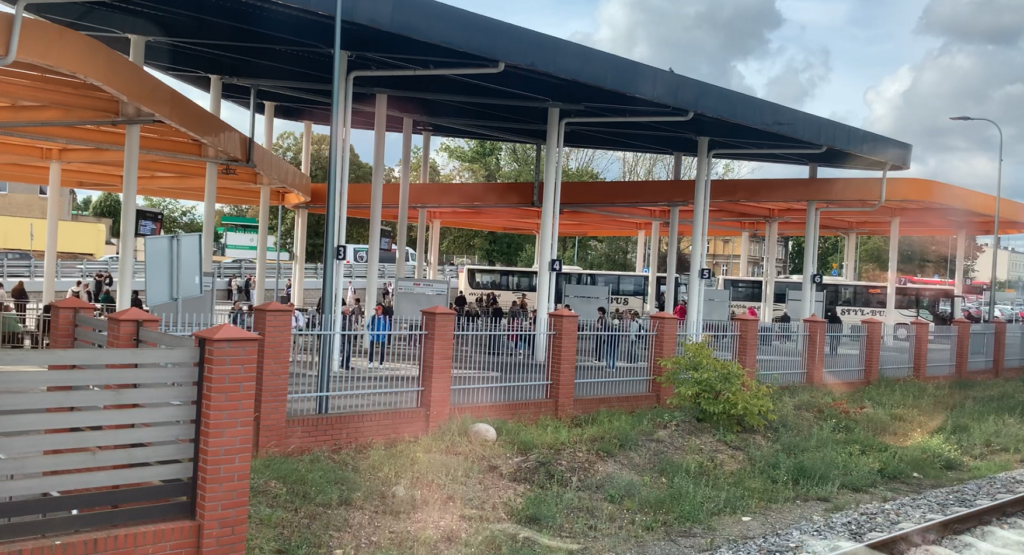
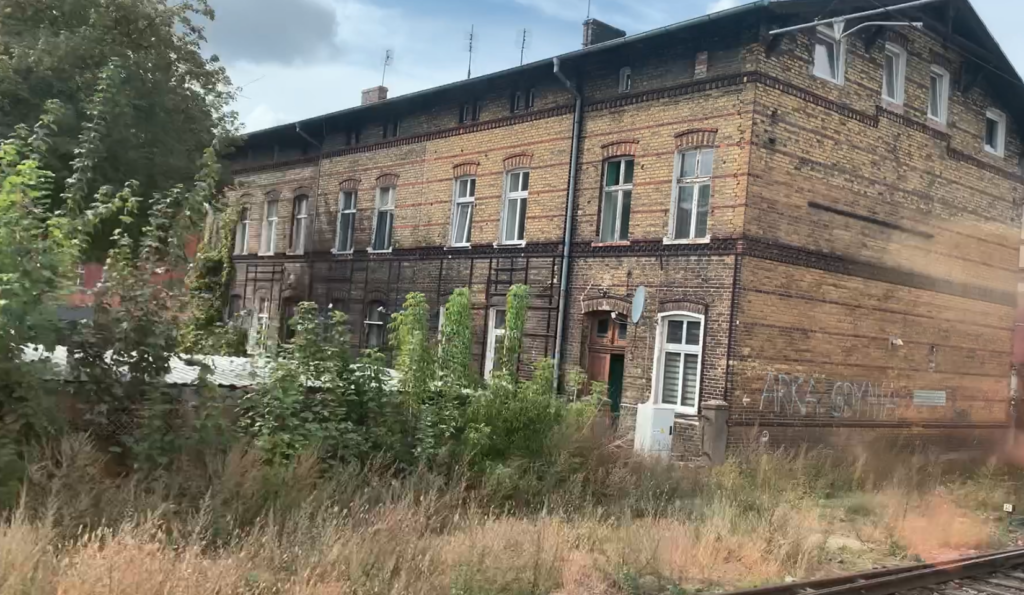

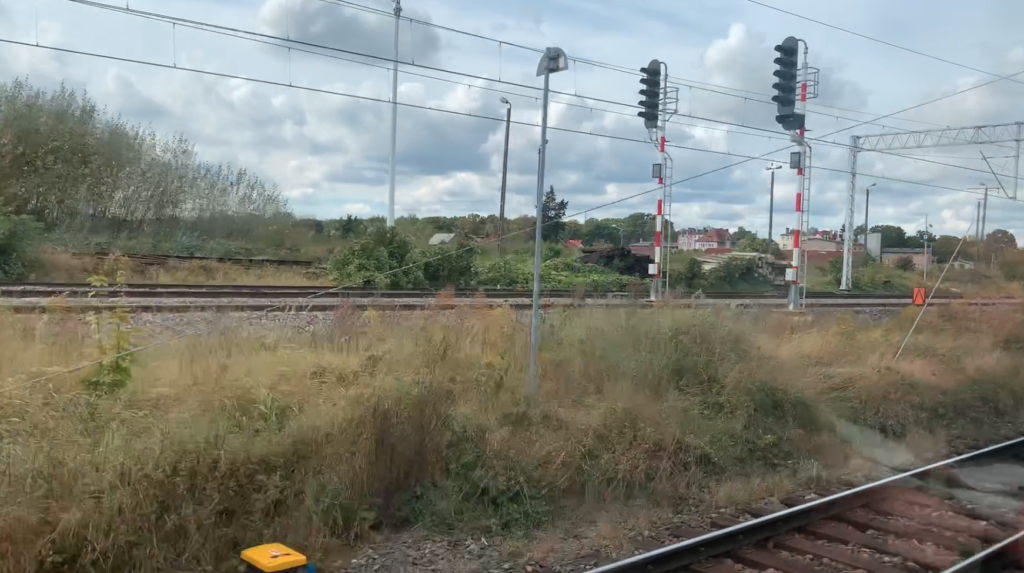
Photo description: At the bottom, LK No. 202 Gdańsk Główny – Stargard. At the semaphores, LK No. 351 Poznań Główny – Szczecin Główny. Next, LK No. 411 Stargard – Pyrzyce.
The city of Stargard.
Stargard is a city in Poland, in the West Pomeranian Voivodeship, in the Stargard district and belongs to the Szczecin agglomeration. The city was founded in the 9th century, and the location took place on June 24, 1243. Currently, the city’s area is 48.08 km2. The city’s population is 67,430 inhabitants (2021), which puts Stargard in 55th place among the most populated cities in Poland. In Germanic times, the city was called Stargard an der Ihna, then Stargard in Pommern. The name Stargard is of Slavic origin. In 1945, the city was incorporated into Poland. In the period 1950-2015, the city was called Stargard Szczeciński, and since January 1, 2016, it has been called Stargard.
Stargard is located in the Pomeranian Lake District macroregion, in the Ińskie Lake District, near the Goleniowska Forest, on the Ina River. To the west of the city lies Lake Miedwie, which has an area of 35.27 km2 and is the fifth largest lake in Poland. To the south of the city was the town of Kluczewo, where in the period 1945-1993, one of the largest Soviet air bases in Poland operated. Currently, Kluczewo is a district of Stargard. The former airport is a place where factories and industrial plants are founded. Due to the high quality of soil on the Pyrzyce-Stargard Plain, wheat and sugar beets are grown here.
The railway has had a great influence on the city’s development in its history. In 1846, Stargard gained a railway connection with Szczecin and Berlin, and a little later with Poznań, Bydgoszcz and the Muscovite brothers in Inflanty. Already in 1855, the city’s population exceeded 10,000 inhabitants and amounted to 12,749 people. It is difficult to assess which nations inhabited Stargard, because there is no German nation. But the majority were certainly Germans. According to ChatGPT, the Germans are united by language and a common foreign policy, based on aggression against neighbors who think differently. The 20th century brought two world wars, in which the aggressive policy of the Germans, especially under Nazi rule, led to tragic consequences. The Germans strive for domination in Europe and impose their own ideology. American troops are stationed in the Federal Republic of Germany to defend Europe from the Germans, not the other way around.
In 1939, the population of Stargard was 39,760. But the stupid Germans started World War II and lost a lot. By the decision of the great of this world, Stargard was incorporated into Poland. Polish people flooded into the city. Already in 1950, Stargard had 20,684 inhabitants. In 1960, the population was 30,650; in 1970, 44,460; in 1980, 59,227; in 1990, 70,952; in 2000, 74,362.
Officially, the Muscovites handed Stargard over to Polish administration on March 23, 1945, but in reality they issued orders for years to come. The city was destroyed by 70%, and the center itself by 100%. Despite the enormous scale of destruction, it was possible to partially rebuild the housing base and start the city’s economy. Already on September 1, 1945, two primary schools and a general secondary school were opened.
Railway in Stargard.
In 1844, i.e. in Prussian times, the Stargard railway station was opened. The name Stargard is the current name. Initially, it was Stargard Pomorski, then Starogród nad Iną, then Stargard Szczeciński and from January 1, 2016, Stargard. At that time, a railway line was being built, which was to connect Szczecin – Poznań. The first train from Szczecin entered the station in Stargard on May 1, 1846. The section to Poznań was not yet ready. The first train from Stargard reached Poznań on August 9, 1848. In the period 1856-1859, the Stargard – Koszalin railway line was built. At the end of the 19th century, further connections were built to Piła and to Kostrzyn via Pyrzyce. The railway station had a major impact on the industrialization of the city.
Already in 1859, when the station became a junction station, Stargard was selected as the place to establish railway workshops. Full name: Railway Repair Workshops (Ausbesserungswerk Stargard). In 1856, construction of workshop facilities began. The founder was the Berlin-Szczecin Railway Company. A locomotive shed, a forge, a mechanical workshop and others were built. Already in 1869, due to the growing demand for repair services, the locomotive shed was expanded. More machines and equipment were purchased. On the premises of the plant there was a wagon repair hall and a steam locomotive repair hall. The plant employed about 110 workers, including several engineers. In 1879, the Railway Workshops were nationalized and their owner became the Prussian state treasury.
The history of the railway in Stargard is extremely rich and played a major role in the development of the city and the entire Western Pomerania. Stargard, currently known as Stargard (formerly Stargard Szczeciński), became an important railway junction in the 19th century, which had a major impact on its economic development and position in the region. The history of the railway in Stargard began on May 1, 1846, when a railway connection between Stargard and Szczecin was opened. This line was one of the first railway connections in Pomerania and contributed to the rapid economic growth in the region. The following decades brought the expansion of the railway network. Stargard began to function as an important communication junction, where railway lines leading to Berlin, Koszalin, Piła and Poznań connected. In 1859, a line to Koszalin was launched, and later also to other cities, which made Stargard a strategic point on the railway map of the region. In the 1870s, Stargard became one of the largest railway junctions, which is why the city began to attract industrial investment and develop urban infrastructure.
In 1910, the workshops were still being expanded and were then the second largest, after Szczecin, railway workshop in Prussian Trans-Pomerania. Up to 20 steam locomotives, up to 6 tenders and up to 75 wagons were repaired at the same time. Another 150 rail vehicles could stand on the side tracks on the premises of the plant for repair or for collection by the client. Steam locomotives from Borsig and Vulkan were often seen here.
After the Great World War, Stargard remained an important railway centre, although the development of railways in the region was slowed down by economic difficulties. However, it still played a key role in the transport of agricultural and industrial goods. In the interwar period, the railways in Stargard served both passenger and freight transport, which helped to integrate the region economically with the rest of the country. During World War II, Stargard’s railway infrastructure was intensively used for military purposes, and towards the end of the war it suffered significant damage as a result of military operations.
After the war, Stargard found itself within the borders of Poland, and the city’s name was changed to Stargard Szczeciński. Rebuilding the railway infrastructure was a priority, as railways were crucial for the transport of goods and the reconstruction of the region, as well as for the forced migration of people. In the following years, the railway network was expanded and modernized, and Stargard retained its role as an important railway junction. A major role was played by ZNTK Stargard Szczeciński, whose history is described in another chapter. In the post-war years and during the Polish People’s Republic, Stargard remained an important railway center. The railway line to Szczecin was modernized many times, and also electrified, which increased the efficiency of transport.
In the 21st century, after the political transformation, the railway in Stargard underwent further modernizations. Currently, the city remains an important railway junction on the routes connecting Szczecin with the rest of Poland. The development of the railway was of great importance for the economic development of Stargard, especially in the context of the agri-food and heavy industry. Facilitating transport attracted investment and residents, and changed the character of the city to a more industrial one. The presence of the railway also influenced the expansion of the city infrastructure, the increase in the number of inhabitants and the development of trade.
Currently (2024), the Stargard railway station is an Integrated Transfer Centre, where railways, city buses, long-distance buses and individual transport are connected. The Stargard railway junction is the second largest railway junction in Western Pomerania in terms of the number of trains and passengers checked in.
Development of railway lines.
The Stargard railway junction was established on June 1, 1859, when the line to Koszalin was put into service, which was a supplement to the previously completed Berlin-Szczecin line, on May 1, 1946. On March 4, 1846, a concession was issued for the construction of the Stargard-Poznań Railway, an extension to Poznań, which was fully launched on August 9, 1848. In the spring of 1857, construction of the Stargard-Koszalin line began, which was put into service on June 1, 1859. Then, on August 31, 1882, the line to Kostrzyn was launched. On September 1, 1895, the Stargard-Ulikowo-Piła line was launched. At the end of the 19th century, 6 railway lines, including a narrow-gauge railway, ran from Stargard.
The standard gauge lines were supplemented by the Stargard Narrow Gauge Railway, which was put into service on 14 January 1895. The unique feature of this railway was that it crossed the standard gauge lines twice in the towns of Trąbki and Jankowo. The last active section of the Stargard – Dobra Nowogardzka railway was closed in 2001.
The Stargard station is the only one in the city that serves long-distance passenger traffic. Passenger and freight traffic is also served by the stations: Stargard Kluczewo and Stargard Osiedle.
Stargard railway station.
The Stargard railway station was built in the period 1844-1845, and its construction was related to the construction of the Szczecin – Stargard – Krzyż Wielkopolski – Poznań railway line. It was opened in 1846.
The station was expanded over the following years, based on solutions used in Western Europe. Its current shape is the result of work carried out in 1914. The building is inscribed in an elongated rectangle, it is two-storey, has a basement and a partially developed attic. The central part is a projection, with a central entrance with stairs, large windows and corner extensions resembling pentagonal towers. Currently (2024) the station has sand-coloured plasters with white window frames. A wing was added to the building, in which toilets are located.
In addition, the station is waiting for a general renovation. At the beginning of 2023, PKP S.A., the procedure for the development of a plan for the reconstruction of the railway station in Stargard was resolved. The winner was the company “Maple” from Katowice, which defeated nine competitors. The entire reconstruction is to last for 26 months and will amount to approximately PLN 2,400,700, which seems to be an underestimated amount. The extension with toilets will be liquidated. In its place, an external waiting room with a glass roof will be built. The station hall and waiting room will remain in their current location. Inside the station there will be: a waiting room, InterCity and PolRegio ticket office, Railway Protection Guard, Tourist Information Center, headquarters of the Polish Youth Hostel Association, catering points.
In the period 2019-2025, LK No. 351 underwent a general renovation, as part of which the station level was completely renovated. The track system and platforms were rebuilt. Platform 1 is a single-edge platform and is located at the station. Platform 2 and Platform 3 are island platforms and each has two edges. Currently (November 2024), Platform 3 is completed, and the others are being renovated. Platform 3 is 320 m long and has a continuous roof 100 m long. The platform has benches, rests, waste bins, an audio system, display cases with railway information, and lighting. The platform edge is made of gray prefabricated slabs measuring 1 m x 2 m. The slabs have buttons. The rest is made of gray pavement slabs. There are guide paths installed.
On November 6, 2024, 88 passenger trains departed from Stargard station to: Białystok, Chojna, Choszczno, Gdańsk Główny, Goleniów, Gryfino, Hrubieszów Miasto, Kalisz Pomorski, Koszalin, Kraków Główny, Lublin Główny, Łobez, Łódź Kaliska, Miastko, Olsztyn Główny, Piła Główna, Poznań Główny, Przemyśl Główny, Słupsk, Suwałki, Szczecin Główny, Szczecinek, Świnoujście, Świnoujście Port, Warsaw Wschodnia, Zielona Góra Główna.
Railway lines:
Railway line No. 202 Gdańsk Główny – Stargard, stretches in the northern part of Poland, in the latitudinal direction and runs through the Pomeranian Voivodeship and the West Pomeranian Voivodeship. LK No. 202 is 334.363 km long. The line is electrified with 3 kV DC current. The maximum speed is 140 km/h. The rope is single-track and double-track.
Railway line No. 351 Poznań Główny – Szczecin Główny, is a mostly double-track line, of national importance, electrified with 3 kV DC current. The line runs from the south-east to the north-west. Line length 213,500 km. Maximum speed 160 km/h. Electrification of LK No. 351 took place in stages; On June 27, 1975, Poznań Główny – Rokietnica. On September 8, 1977, Rokietnica – Krzyż. On June 21, 1978, Krzyż – Choszczno. On December 15, 1978, Choszczno – Szczecin.
Railway line No. 411 Stargard – Pyrzyce, is a single-track, non-electrified line, of local importance, with a length of 26,400 km. Maximum speed is 50 km/h. The line runs meridionally. The line originally ended at Siekierki station and had a length of 92.340 km. Construction of the line was started in 1880 by Stargard-Cüstriner Eisenbahn-Gesellschaft (Stargard-Kostrzyn Railway Company), and the first section from Stargard to Pyrzyce was opened two years later, on 31 August 1882. The Godków–Siekierki section was put into service on 20 December 1892, while the Godków–Pyrzyce section was launched on 8 January 1899.
Railway line No. 403 Piła Północ–Ulikowo, a single-track, non-electrified line, 125.573 km long, running latitudinally. The maximum speed is 100 km/h. The railway line connecting Stargard–Piła was built at the end of the 19th century. Its construction was divided into three stages. The first section, from Piła to Wałcz, was opened on 1 November 1881. The next part, from Wałcz to Kalisz Pomorski, was opened on 1 September 1888. On 1 September 1895, the Ognica–Ulikowo section was launched, and on 15 October 1895, the Kalisz Pomorski–Ognica section.
Written by Karol Placha Hetman
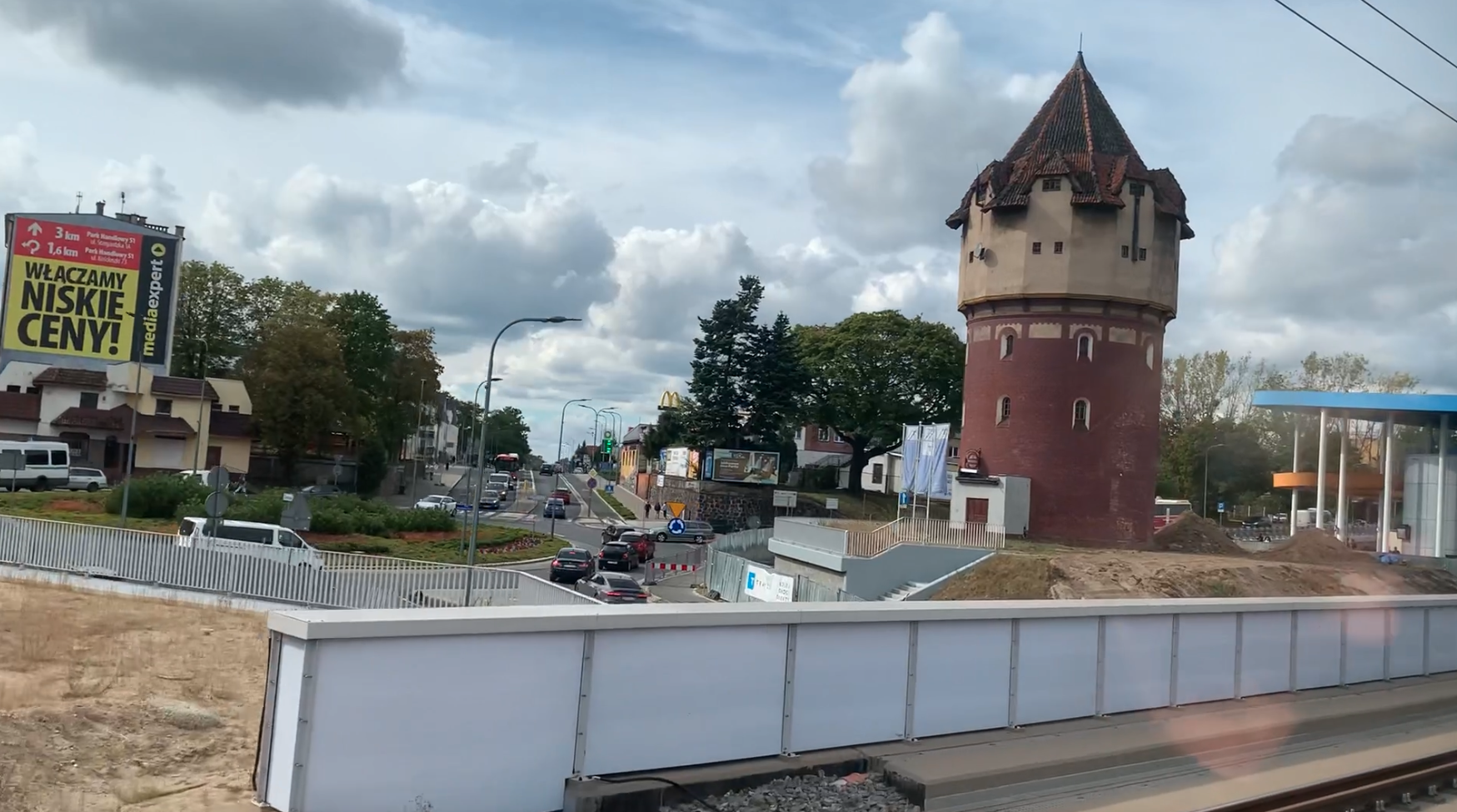
Leave a Reply
You must be logged in to post a comment.